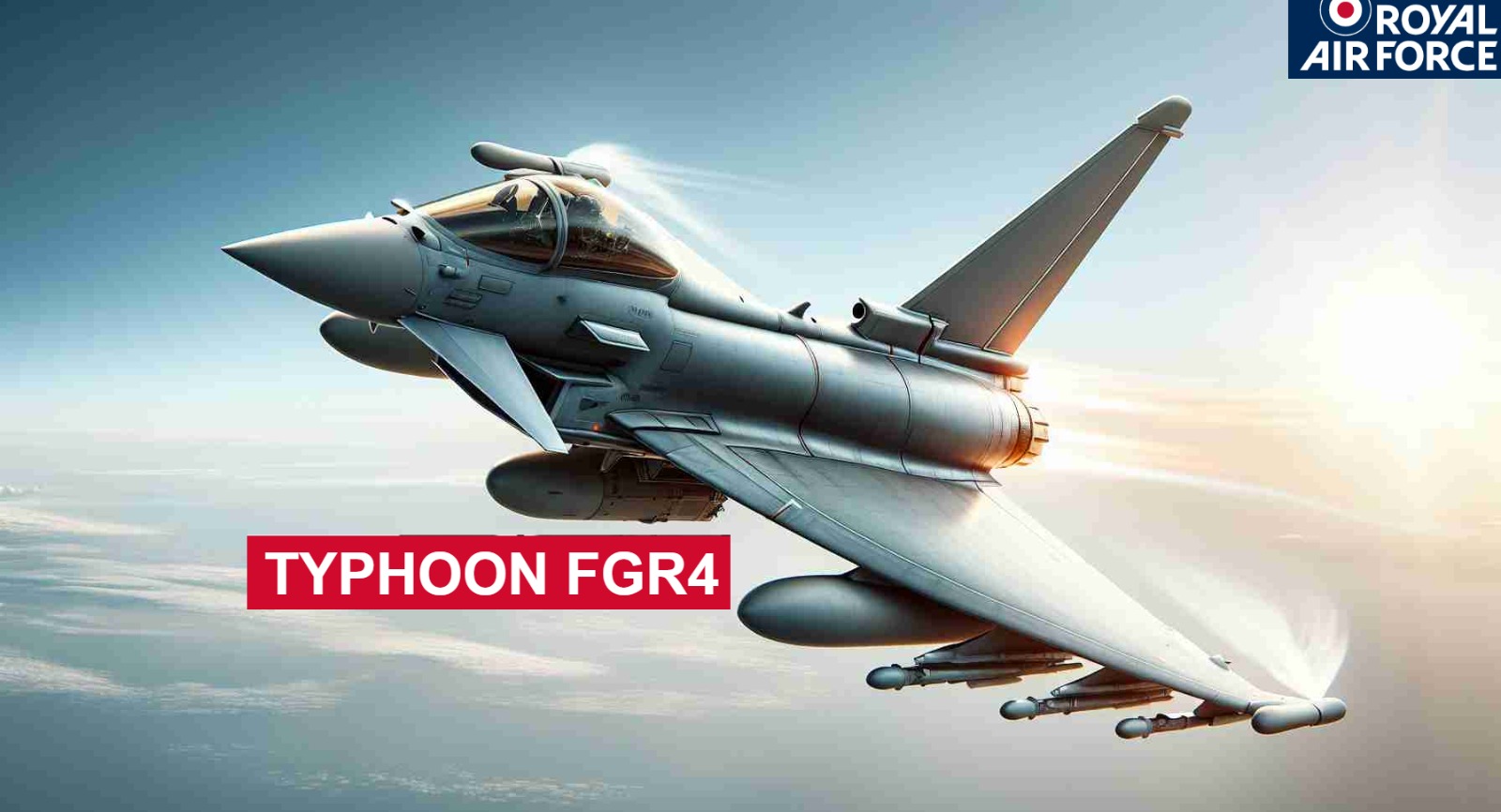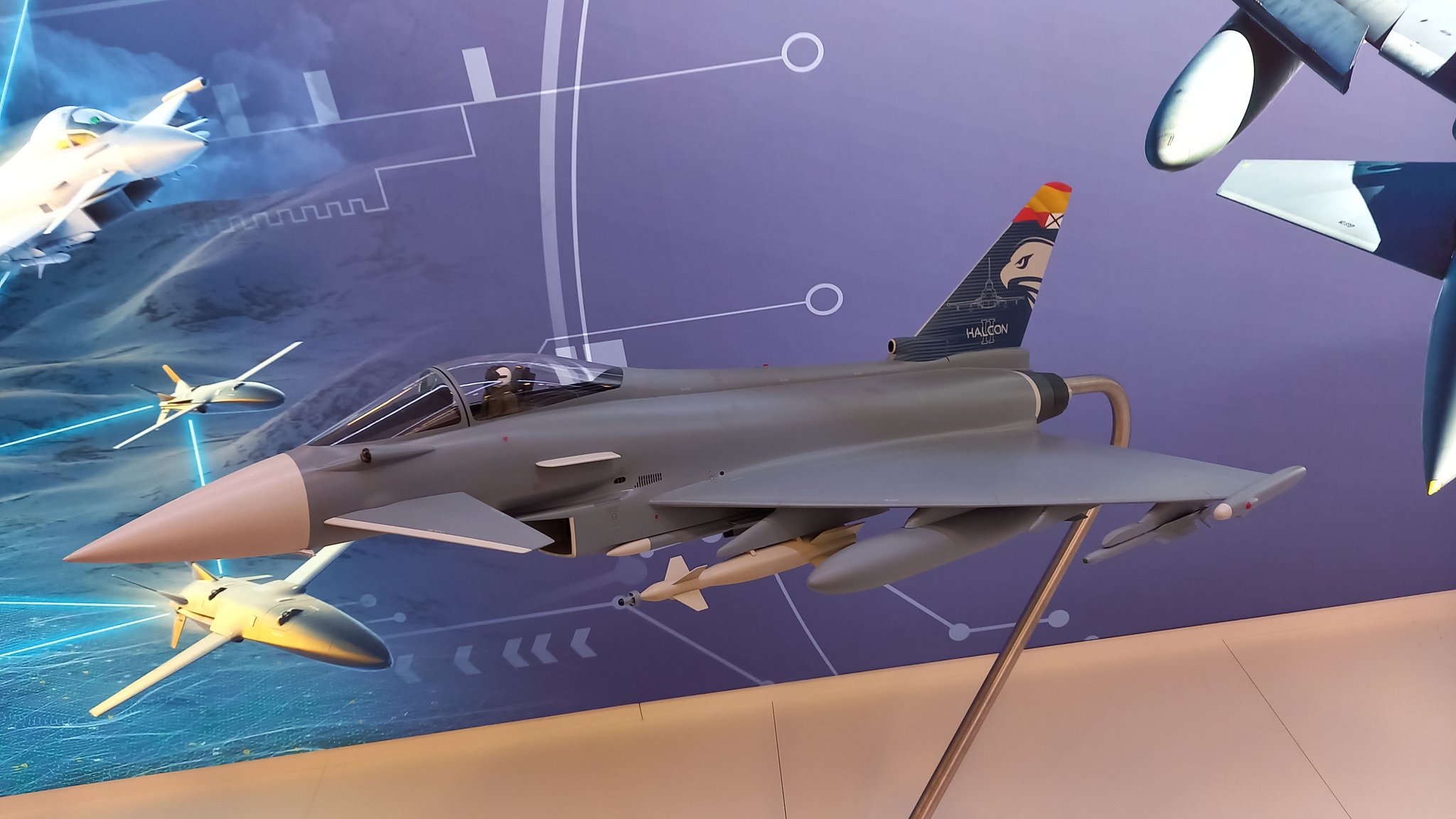An economic impact study of the Eurofighter Typhoon fighter jets, released by the Eurofighter consortium, projects hundreds of possible sales for the aircraft. This comes a year after Airbus said it was staring at a shortage of orders for the aircraft.
The Eurofighter Typhoon is a multirole, supersonic, canard delta wing, twin-engine European multinational fighter produced by a team comprising Airbus, BAE Systems, and Leonardo. Eurofighter Jagdflugzeug GmbH, a joint holding company, primarily manages the project.
The Eurofighter Economic Impact Assessment report, which was put together by Strategy&, a part of PricewaterhouseCoopers (PwC), presents a “growth scenario” of up to 287 new sales, some of which are aircraft that have just been contracted but have not yet been delivered.
The report, released on April 9 by the Eurofighter consortium, predicts that hundreds more multirole combat aircraft could be sold to exporting and partner countries.
The report stated, “A base scenario [of the existing fleet of 680 jets to nine countries, plus 83 Quadriga and Halcon I/II buys for Germany and Spain, respectively] would sustain a minimum production rate for a few years, but further domestic and export orders are needed.”
🔴#LDO_PR An independent report published today by @strategyand, part of the @PwC network, has revealed the impressive scale of the @eurofighter #Typhoon programme’s contribution to economies across #Europe. Find out more here: https://t.co/g4JkIJqCwr pic.twitter.com/mMimrLfMJr
— Leonardo Aircraft (@LDO_Aircraft) April 9, 2024
PwC estimated that in addition to the 38 Quadriga and 45 Halcon I/II jets already contracted, an additional 74 partner countries and 130 export country sales would be required to support production across the four final assembly lines at Manching in Germany, Caselle in Italy, Getafe in Spain, and Warton in the UK.
Giancarlo Mezzanatto, CEO of Eurofighter Typhoon, said: “The Eurofighter Typhoon program directly boosts European economies and supports tens of thousands of crucial aerospace jobs, benefiting the communities where we live and work. There is also significant spillover in regions where Eurofighter production lines are located and where the program often sustains SMEs, start-ups, and educational institutions.”

The report is significant as it paints a positive picture amid predictions that the Eurofighter was trailing in the export market. Last year in February, Airbus SE’s defense unit revealed that the company was planning to increase production of its Eurofighter jet and other important weapons systems but had held back due to the inability of governments to commit to orders.
At the time, Michael Schoellhorn, chief executive of Airbus Defense and Space, predicted higher orders for aircraft and said, “Currently, we don’t have the orders to ramp up any further. We’re waiting for orders to reconfirm that we can keep the lines running for systems such as its Eurofighter.”
According to Airbus, the Eurofighter is the most advanced swing-role fighter in existence. Nine countries—Germany, the UK, Italy, Spain, Austria, Oman, Saudi Arabia, Kuwait, and Qatar—currently operate the Eurofighter.
Although the Eurofighter Typhoon has participated in several fighter jet contests in recent years, it has lost many of them to the US-origin Lockheed Martin F-35 Lightning II fighter jets, especially as the fifth-generation aircraft continues to sweep Europe with its stealth appeal.
The Eurofighter Typhoon has also faced stiff competition from another European 4+ generation aircraft: the Dassault Rafale.
Despite the stiff competition, the latest study predicts more sales, suggesting the aircraft is not done yet and is still pretty much in the running, waiting for new orders. However, the report does not inform us where these potential orders could come from.
Eurofighter Awaits New Orders
The German government and Airbus Defence & Space inked a deal in November 2020 to produce and supply 38 new Eurofighter aircraft to the Luftwaffe, the German Air Force. Airbus formally began the final assembly of these aircraft at its facilities in Manching, near Munich.
The latest economic impact report does not specify the exact source of the additional predicted sales, but it was previously anticipated that Germany would purchase more aircraft to meet its need to replace its Tornado fleet.
Since the country signed a deal for a new F-35A Lightning II aircraft, the Eurofighter purchase remains undecided. In November last year, an official told Janes that Germany had not determined if it would proceed with its previously announced plan to buy the Eurofighter Tranche 5 combat aircraft. However, the lid on that potential purchase has not been closed yet.
Another country that could make a potential deal is Spain. In September 2023, Spain commenced the purchase of an additional 25 Eurofighter combat aircraft as part of the Halcon II program.
This deal was in addition to the 20 Spain ordered in 2022 as part of its previous Halcon project. There are speculations that the country could opt for another purchase under a Halcon III requirement.

As for export, the European Consortium has pitched the aircraft to another European country: Poland. The East European country remains on the lookout for 32 more fighter jets after buying the South Korean FA-50 and the American F-35.
Last year, the consortium projected the aircraft as a “perfect fit” for Poland. However, a decision from Warsaw is still awaited.
The consortium has also been making overtures to Middle East nations. Saudi Arabia has emerged as a potential Eurofighter buyer yet again as Germany dropped its resistance to the sale in February this year.
Saudi Arabia purchased 72 Eurofighters from BAE Systems in 2007. However, the Middle Eastern country still needs an additional 48. Although the French manufacturer Dassault has also entered the scene to fulfill Riyadh’s fighter jet requirement, the kingdom has not made a decision yet.
Turkey has also been interested in the Eurofighter Typhoon. In November last year, Turkey said it was in talks to buy the European aircraft because it realized that the United States might never agree to sell the F-16 Fighting Falcons that Ankara’s Air Force needed.
However, even after the US approved the $23 billion sale of its F-16 fighters to Ankara, a Turkish Defense Ministry official told the media that Turkey remained interested in purchasing 40 Eurofighter Typhoon aircraft.
India is another country that has been offered the Eurofighter Typhoon. It is looking to acquire 114 fighter jets under the Multi Role Fighter Aircraft (MRFA) program. The Eurofighter consortium remains hopeful again after losing to Dassault Aviation last time.
While these states may eventually decide to make a big buy, the Eurofighter Consortium has not confirmed any new deal yet. However, it hopes to keep the production lines up and running and bag new orders shortly.
- Contact the author at sakshi.tiwari9555 (at) gmail.com
- Follow EurAsian Times on Google News




